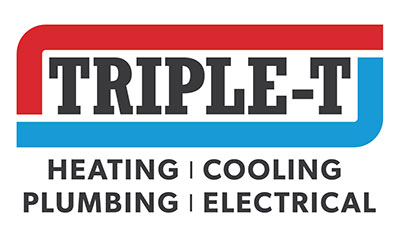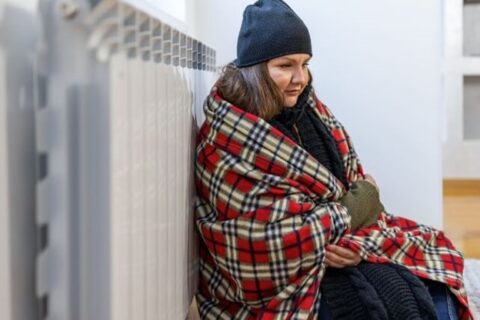Tips to Keep Your Heat Pump System Performing Efficiently
Americans often save as much as $ 400 to $ 1000 per year when they replace old heating systems with modern heat pumps. However, to maximize the realized savings, you need to make sure that your heat pump is working efficiently. Here’s some information that will help you make that happen.
What is a Heat Pump Anyway?
A heat pump is part of a home heating and cooling system and is installed outside your home. Like an air conditioner such as central air, it can cool your home, but it’s also capable of heating your home in the winter. Basically, a heat pump pulls the heat from the outside air into your home in the winter to warm it. Even in chilly weather, the heat pump can still pull a bit of heat from the air.
In the summer, the heat pump pulls heat from the inside to cool your home. The heat pump uses refrigerant to provide indoor comfort year round. Because they provide heating and cooling, there’s no need to install separate systems in the home.
Why Does it Work Differently?
A furnace generates heat that’s distributed around your house. A heat pump absorbs heat energy from outside your home and transfers it to the indoors. In extremely cold weather, an auxiliary heating source
may supplement the heat pump. In warmer weather, the heat pump is for all purposes identical to a traditional air conditioning system, absorbing heat from the indoor air and releasing it through the outdoor unit.
You can help to increase your heat pump’s efficiency with some routine maintenance items. Here are a few things any homeowner can do to increase the heat pump’s performance and reduce energy costs.
-
Check, Clean, or Replace Air Filters
Every heat pump system has at least one air filter that needs to be changed regularly. The filter traps unwanted airborne pollutants so that they won’t be floating around in the air. Over time, the filters get clogged and can no longer function properly. If you can see through the filter, it probably has some life left in it, but if you can’t, it needs to be cleaned or replaced. Don’t skimp on filters by getting the cheapest ones you can find. You get what you pay for, and a quality filter will best protect your system.
-
Clean the Inside Unit
To clean the inside unit, you should first turn off the circuit breaker that controls the system, then remove the access panel. Vacuum off the coils to remove any dust or dirt. Then, use bleach and water to clean out the drain pan and the drainage line.
-
Clean the Outside Unit
There are several ways to tackle this job. The easiest way is to merely hose it off to get rid of any debris that might be on the fins or other components. If you want to go further, turn off the circuit breaker and remove the access panels. Clean the fins and if some are bent or flattened, a simple fin comb from your local hardware store can easily straighten them out.
-
Clear Debris from Around the Outside Unit
For the heat pump to work properly, the outside unit must have unrestricted air flow. Remove any loose debris from on top of or around the unit. If there are any bushes or tree branches close to the unit, they may need to be trimmed. A good rule of thumb is to clear a two foot space around the heat pump. during the winter. Do NOT cover your heat pump. It’s designed to perform in any kind of weather and doesn’t need to be covered in the winter. At times, the heat pump may form ice on the outside unit. The system will automatically go into a defrost mode to get rid of the ice, so don’t be overly concerned when that happens.
-
Avoid Making Frequent Temperature Adjustments.
Don’t switch the heat pump on and off during the day. Consistent operation can usually lower your energy bill. However, you can definitely lower the temperature when you’re going to be away from home.
-
Thermostat
Upgrade your thermostat to a digital programmable thermostat. If possible, opt for a smart thermostat that can be programmed from a phone or tablet. With this unit, you can lower the temperatures in your home during those times when no one is home, and lower it when you return, all automatically. Studies have shown that this type of thermostat can save you 10-15% on your average power bill, so it can pay for itself in one season.
-
Clean Your Vents and Air Ducts
Your heat pump will work best when the airflow in your vents and ductwork is unrestricted. Vacuum out the dirt and debris and make sure none of your vents are closed. Closed vents can put undue pressure on your air handler.
-
Schedule a Professional Inspection and Maintenance
Of course, one of the best ways to make sure your heat pump is running efficiently is to have it checked and serviced by a professional. Performing some preventive maintenance can assure your heat pump is up to par and can help ward off any major repairs that might be needed in the future. If you’d like to schedule an inspection, please contact the experts at Triple T Plumbing, Heating and Air.
Established in 1974, we are a family-owned and operated business dedicated to serving our community in the area of heating and air conditioning, air quality services, and plumbing. With a commitment to customer satisfaction and over 40 years of hands-on experience, our team can be trusted with virtually any service challenge. Visit our website, or contact us at 801-307-4835 in Utah County or 435-258-9864 in Washington County.


